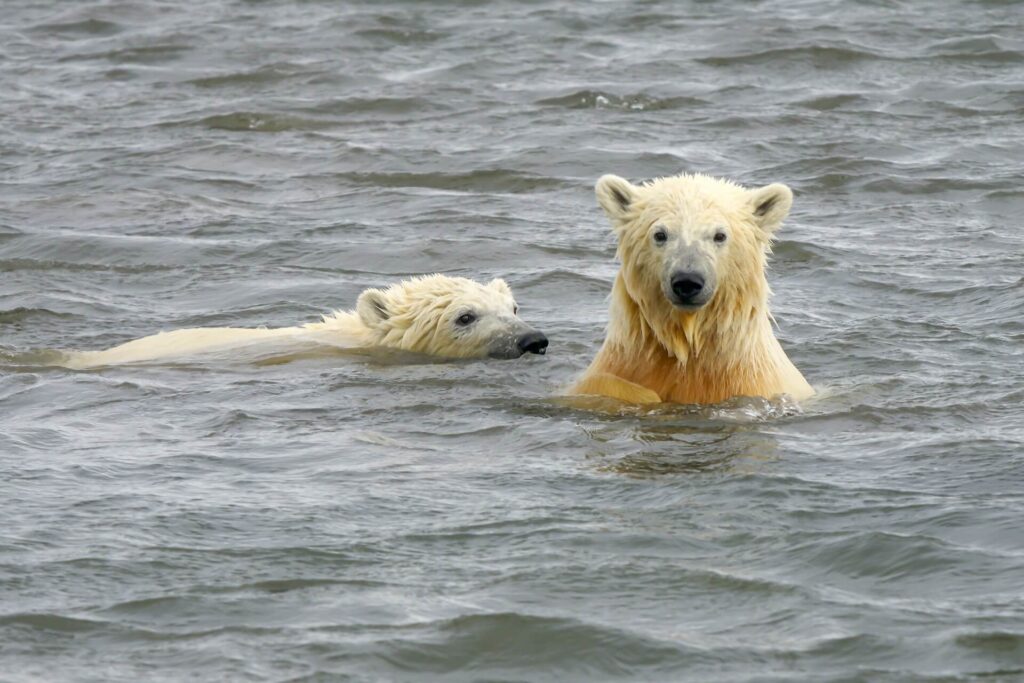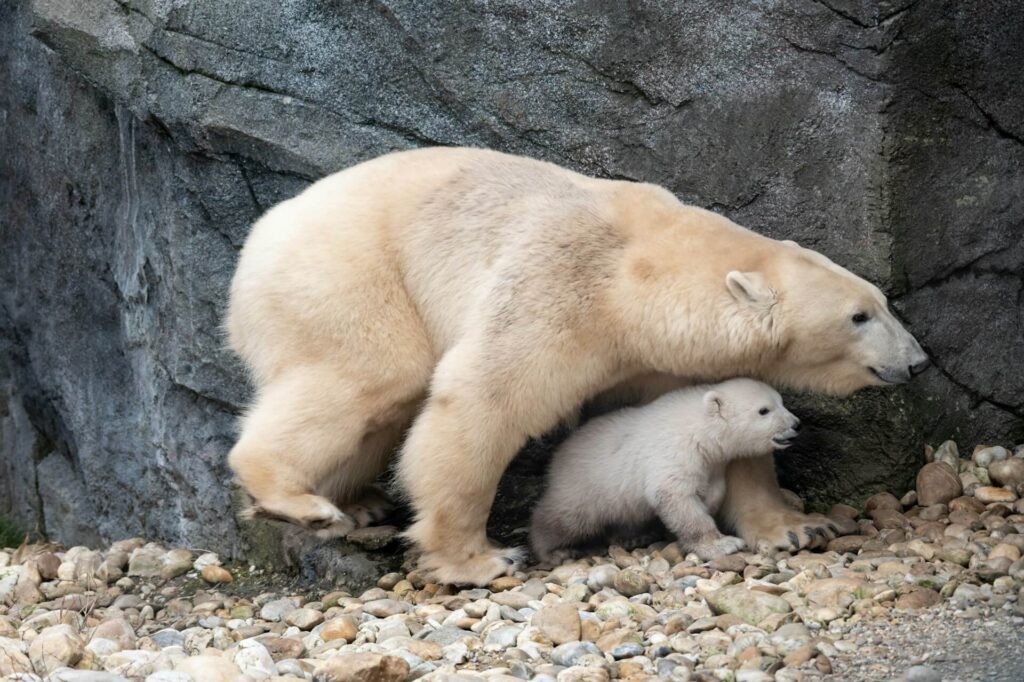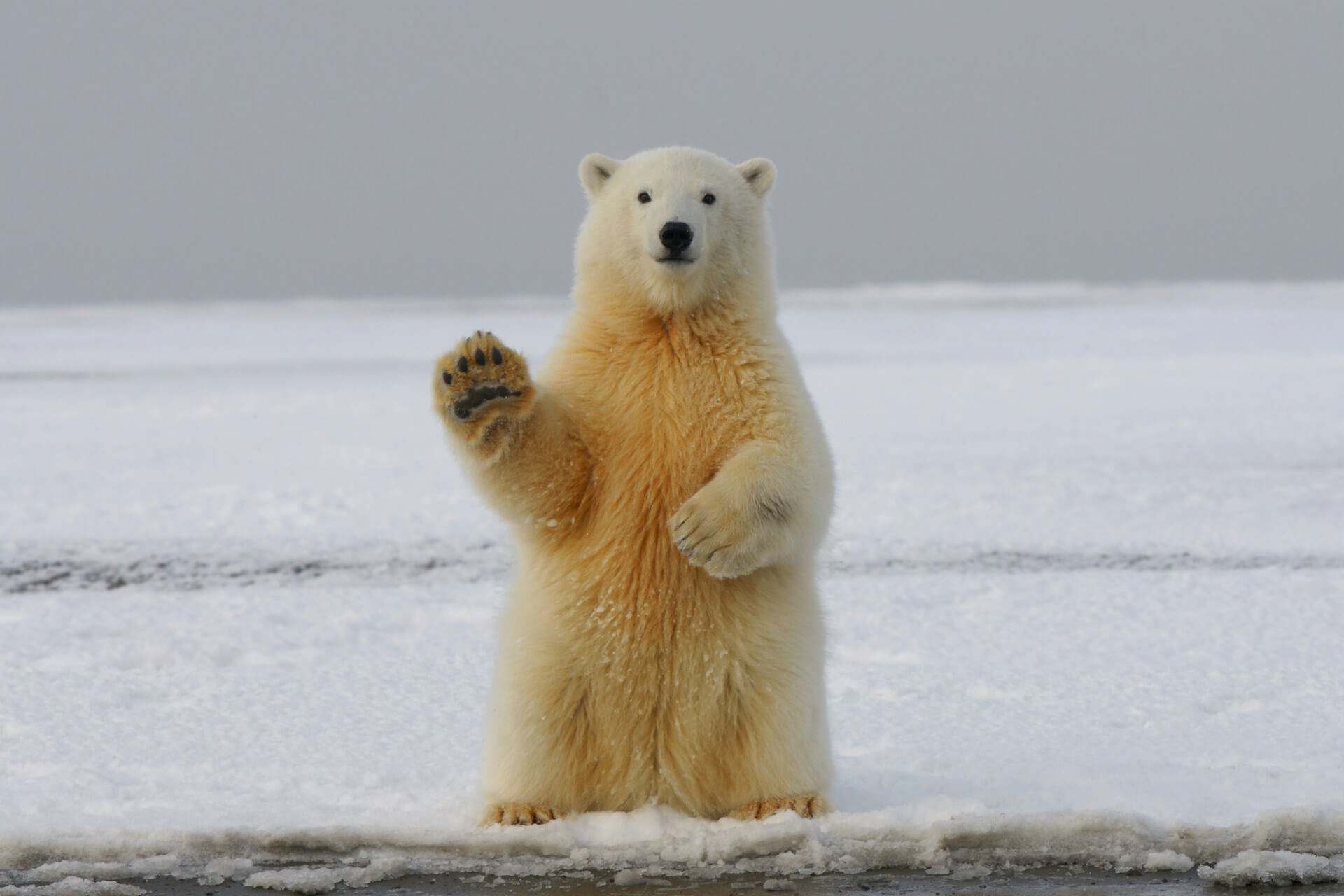Hey everyone! Are you ready for an amazing Arctic adventure? Today, we’re going to learn some really interesting facts about polar bears. Get ready for an awesome journey that will leave you amazed!
Polar bears are the biggest predators on Earth. They have fascinated people of all ages for many generations. They are well adapted to survive in the challenging Arctic environment because of their thick fur, layers of fat, and impressive swimming abilities. But there’s still a lot more to discover about polar bears, so let’s dive in and explore together!

10 Fun Facts About Polar Bears for Kids
- Polar bears are excellent swimmers. They can swim for long distances and are capable of reaching speeds of up to 6 miles per hour in the water. Their large front paws act like paddles, helping them glide through the icy waters effortlessly.
- Polar bears have a great sense of smell. In fact, they can detect prey, such as seals, from a distance of over 20 miles away! Their keen sense of smell helps them locate food even when it’s hidden beneath the snow or ice.
- Polar bears are not actually white. Their fur is made up of translucent hairs, which appear white because they reflect light. Underneath all that fur, a polar bear’s skin is actually black, which helps them absorb heat from the sun.
- Polar bears have a layer of blubber. This thick layer of fat provides insulation and helps them stay warm in freezing temperatures. It also acts as a source of energy when food is scarce.
- Polar bears are skilled hunters. They patiently wait by a seal’s breathing hole in the ice and pounce when the seal surfaces for air. They can also catch seals by swimming beneath the ice and grabbing them with their powerful jaws.
- Polar bears are excellent mothers. Female polar bears give birth to their cubs in a den made of snow and ice. The cubs stay with their mothers for about 2-3 years, learning important survival skills before venturing out on their own.
- Polar bears have large paws. Their paws act like snowshoes, helping them distribute their weight evenly and preventing them from sinking into the snow. These large paws also provide excellent traction on the slippery ice.
- Polar bears have a thick layer of fur on the bottoms of their feet. This helps insulate them from the cold ground and prevents them from slipping on the ice.
- Polar bears are capable of going months without eating. During the summer months, when food is scarce, polar bears enter a state called “walking hibernation,” where they conserve energy by reducing their metabolic rate.
- Polar bears are facing serious threats. Climate change is causing the Arctic ice to melt, which is destroying the polar bears’ habitat and making it harder for them to find food. Conservation efforts are underway to protect these incredible animals and ensure their survival for future generations.

Where Do Polar Bears Live?
Polar bears live in the Arctic region, including countries like Canada, Russia, Norway, Greenland, and the United States (Alaska). They are well-suited to the cold and icy environment, where temperatures can reach -50 degrees Celsius (-58 degrees Fahrenheit).
These animals spend most of their time on the sea ice, which is where they hunt seals, their main source of food. The sea ice is crucial for their survival because they depend on it for hunting, breeding, and traveling.
Here is a list of countries where polar bears can be found:
- Canada
- Denmark (Greenland)
- Norway (Svalbard)
- Russia
- United States (Alaska)

Did you know that Polar bears are not actually white? Their fur is made up of transparent hairs that look white because of how they reflect light. However, their skin underneath is black, which helps them absorb heat from the sun.
What Do Polar Bears Eat?
Polar bears are carnivores and they eat meat. They mainly eat seals, especially ringed seals and bearded seals. Polar bears are flexible hunters and will also eat other sea animals, fish, and even birds and their eggs if they get the chance.
To catch their prey, polar bears use their strong sense of smell to find breathing holes in the ice where seals come up for air. They wait patiently by these holes for hours, and when a seal appears, they quickly attack, using their strong jaws and sharp teeth to catch their meal.

Threats to Polar Bears and Conservation Efforts
Polar bears are in danger, and it’s important that we act to protect them and their Arctic home. The biggest threat to polar bears is climate change. As the Earth gets warmer, the Arctic ice is melting quickly, which means polar bears have less space to hunt and struggle to find food.
Other dangers to polar bears include pollution, oil and gas development, and conflicts with humans. But there is hope. People are working to protect polar bears and their homes. They are trying to reduce the amount of greenhouse gases we produce, support sustainable practices, and make more people aware of how important it is to protect the Arctic ecosystem.
Conclusion and Key Takeaways
Kids, we’ve had an amazing journey exploring polar bears and learning interesting facts about them. From their impressive swimming skills to their strong sense of smell, polar bears are truly remarkable.
Remember, it’s our responsibility to protect the Arctic and ensure polar bears have a future. We can make a difference by reducing our carbon footprint, supporting organizations that protect the Arctic, and educating others about conservation.
So, are you ready to join the fight to save polar bears and their Arctic home? Let’s work together to ensure future generations can continue to enjoy the beauty and wonder of these magnificent creatures.


Leave a Reply